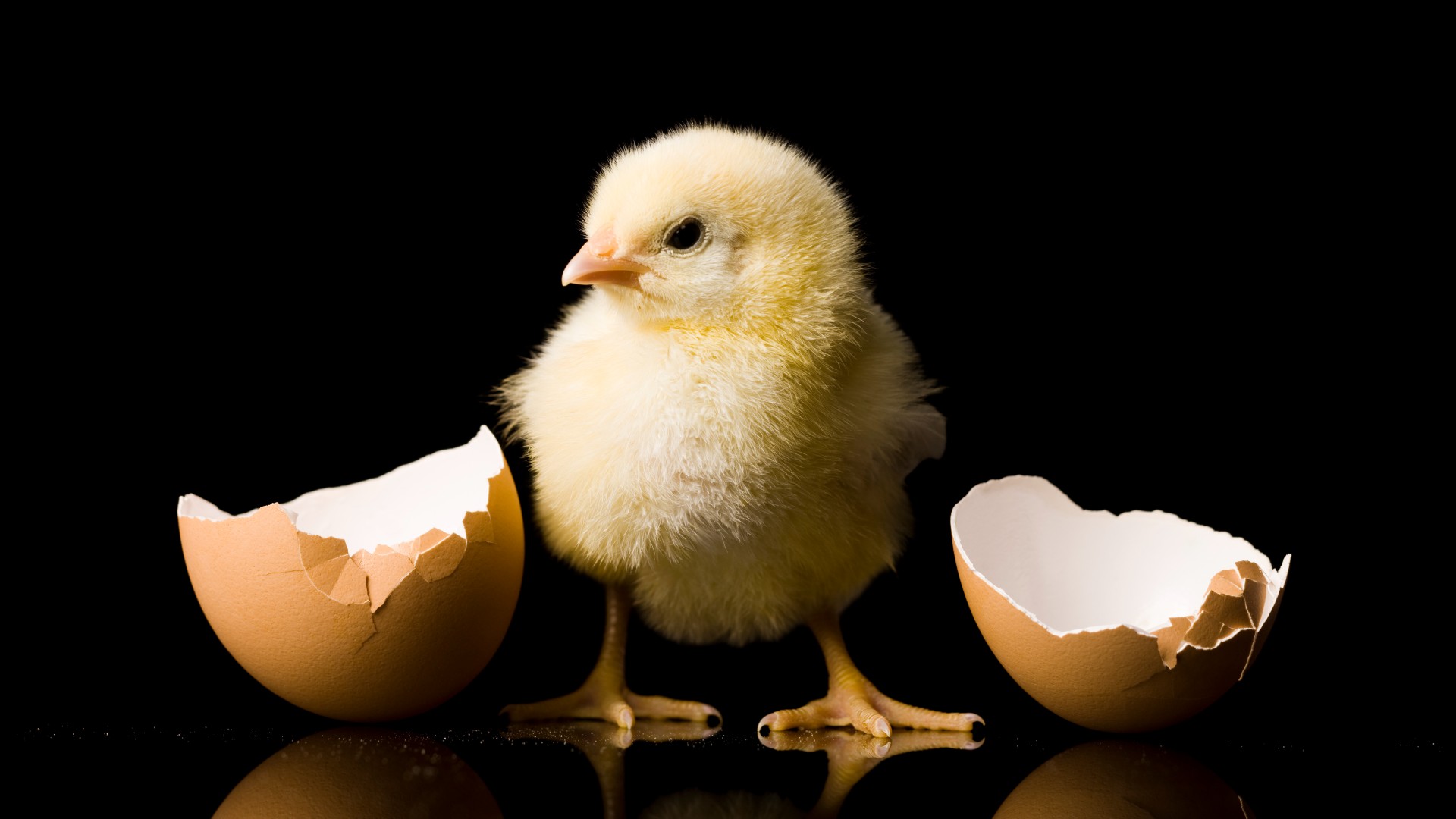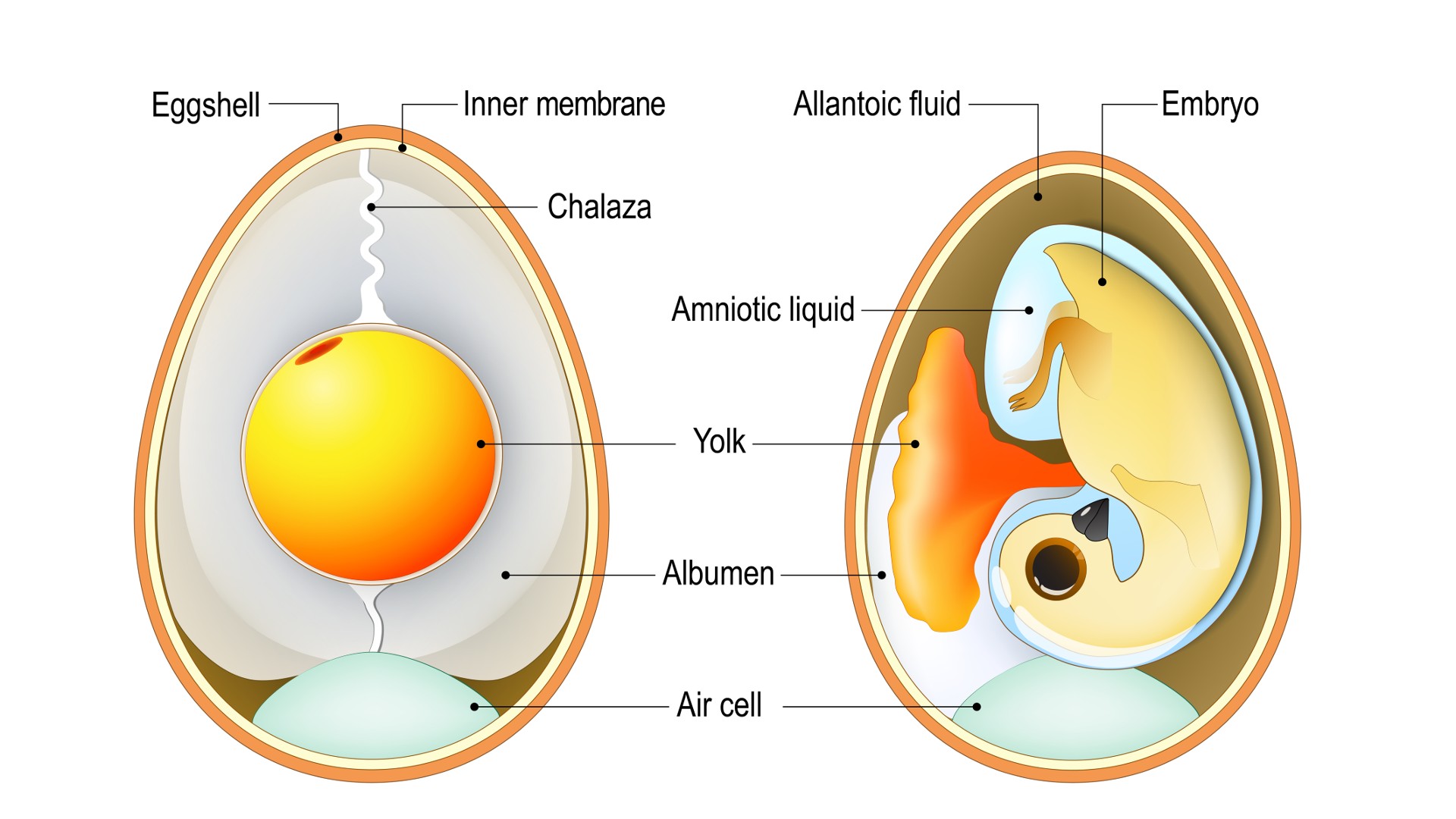
Which came first: The chicken or the egg?
Most biologists will answer confidently when asked "which came first, the chicken or the egg?" but the answer may depend on what type of egg you're talking about.

You've heard the age-old riddle: "Which came first: the chicken or the egg?" Taken metaphorically, it's a meditation on the futility of determining the cause of a self-perpetuating cycle. Taken literally, it's a great question for evolutionary biologists.
Chickens come from eggs, but eggs come from chickens. So which came first?
Most biologists state unequivocally that the egg came first. At their most basic level, eggs are just female sex cells. Hard external eggs that can be laid on land (also known as amniotic eggs) were a game changer for vertebrates.
"The egg is such an important step in [vertebrate] evolution, because it allowed amniotes to go further and further away from water," Koen Stein, a paleontologist at the Royal Belgian Institute of Natural Sciences, told Live Science. Prior to the dawn of hard-shelled eggs loaded with nutritious yolks, vertebrates had to rely on bodies of water to reproduce. Most amphibians still face this aquatic limitation — they need to keep their gelatinous eggs moist in order to survive.
Related: How do emperor penguin dads stop their eggs from freezing?

True birds didn't show up in the fossil record until the mid- to late Jurassic, around 165 million to 150 million years ago, according to research published in the journal Current Biology. But scientists think the first shelled eggs evolved long before then — around 325 million years ago, according to the University of Texas at Austin's Biodiversity Center. That means the egg came "well before the chicken," Stein said. These very first eggs were likely malleable and leathery in texture, much like the eggs laid by today's reptiles and platypuses.
There were plenty of land-based vertebrates laying amniotic eggs in the Carboniferous, Permian and Triassic periods, but the most famous of these animals are the dinosaurs. Stein has studied some of the earliest known dinosaur eggshells, which come from the early Jurassic period, about 200 million years ago. These eggs had extremely thin outer shells, only about 100 microns thick. "That's the thickness of a human hair," Stein said. However, based on their structure, these early dinosaur eggs would have been rigid, like porcelain, rather than flexible, like a banana peel, making them the earliest known example of an egg as we know it today.
Sign up for the Live Science daily newsletter now
Get the world’s most fascinating discoveries delivered straight to your inbox.
That thinness probably explains why researchers have had trouble finding earlier examples of eggshells. When an egg encounters rich, acidic soil, it begins to slowly dissolve. "The soil would have made it impossible for such a thin calcareous layer to be preserved," Stein said. Another idea is that early dinosaur eggs were soft shelled, and so didn't preserve well in the fossil record, according to a 2020 study published in the journal Nature.
Which came first: The chicken egg or the jungle fowl egg?
So the egg definitely predated the chicken. Case closed, right? Well, not quite. If we're talking about the first chicken egg, the story changes.
Chickens (Gallus gallus domesticus) likely evolved from a subspecies of red jungle fowl (Gallus gallus) around 50 million years ago. Humans living in Southeast Asia first domesticated these birds somewhere between 1650 B.C. and 1250 B.C., according to a 2022 research article published in the journal Proceedings of the National Academy of Sciences.
At some point during the domestication process, the last ancestor of modern chickens would have laid an egg containing an embryo with enough genetic differences to make it distinct from its parent species. This embryonic chicken would have developed in the not-quite-chicken egg before hatching. Then, after reaching adulthood, it would go on to lay the first proper chicken egg. In this way, the chicken could be said to predate the chicken egg.
But evolutionary history isn't straightforward; there is evidence that chickens interbred with other subspecies of jungle fowl even after becoming their own genetically distinct subspecies. Some of these traits are more (or less) evident in certain modern chicken breeds. What's more, chicken domestication appears to have occurred independently multiple times in parts of India and Oceania over several thousand years, according to the University of Wisconsin-Madison. So determining which chicken was the original can be tricky.
Regardless of which came first, biologists and philosophers agree that chickens and eggs have something important in common: They're both delicious.

Joanna Thompson is a science journalist and runner based in New York. She holds a B.S. in Zoology and a B.A. in Creative Writing from North Carolina State University, as well as a Master's in Science Journalism from NYU's Science, Health and Environmental Reporting Program. Find more of her work in Scientific American, The Daily Beast, Atlas Obscura or Audubon Magazine.










